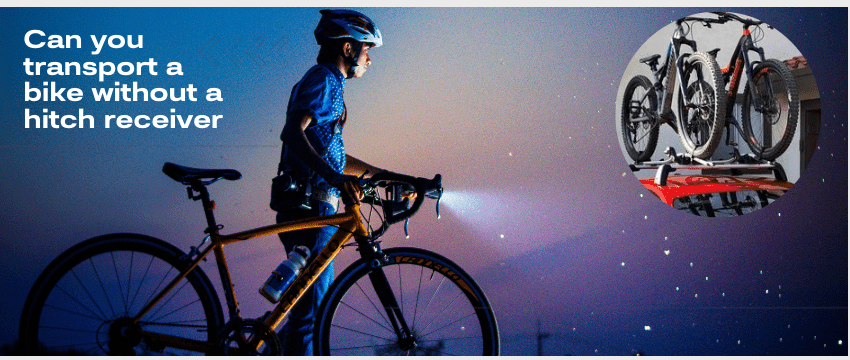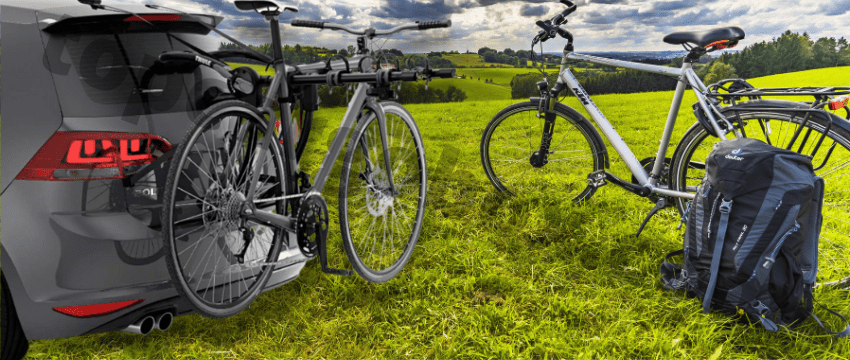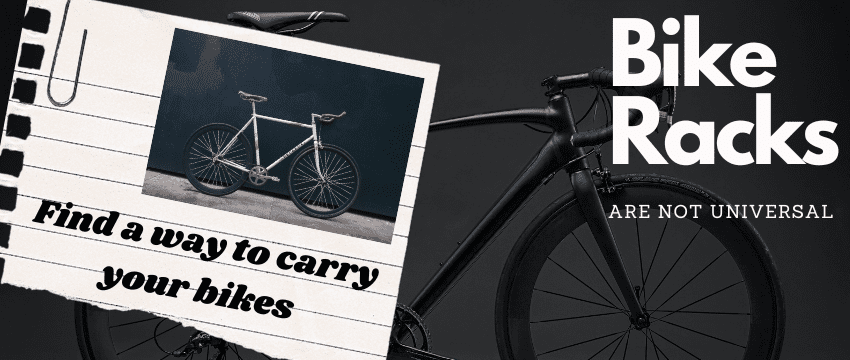If you are looking for a way to carry bikes with your vehicles, you can find some solutions without using hitches. What are hitches? They are devices for attaching car accessories to cars, and after a successful connection, you can tow things at the back of your motor. People often name these devices as trailer hitches. These hitches have different dimensions that fit on various hitch receivers, so you must consult the auto dealer before buying one for your future hauling life.
However, you may feel that it is complicated to use the trailer hitch to carry bicycles; thus, we are here to offer you some other methods to deliver bikes between places.
Except for using hitch-mounted bike carriers, there are some other options that you can use to have your bicycles transported between places.
Roof-Mounted Bike Racks
These bike racks usually stay above the car roof and lock on the roof racks or crossbars. If you are new to rooftop cargo carriers, you may confuse about these terms (roof racks, crossbars, roof rails). You can use the link to check on them and understand the differences between these things.
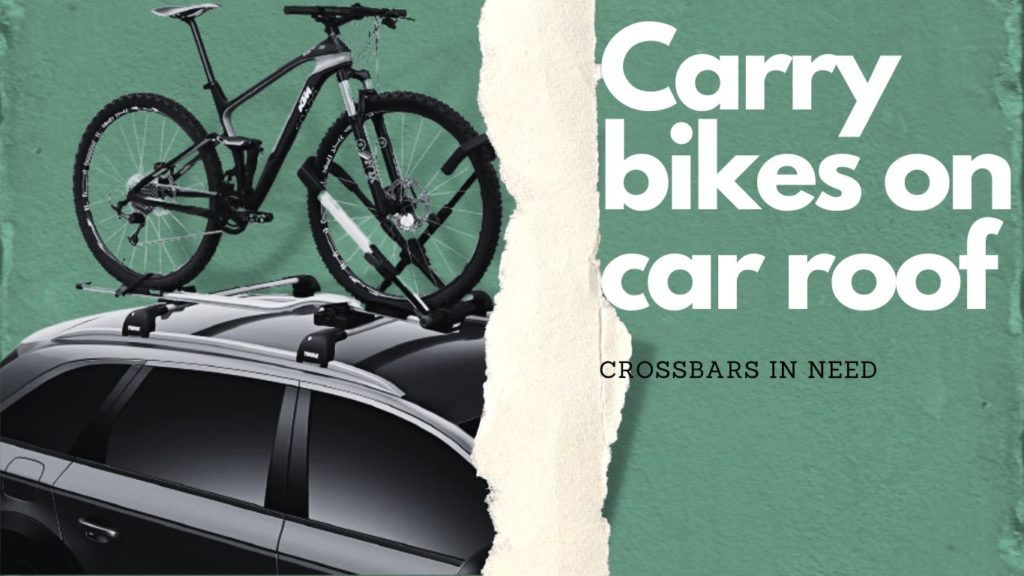
If you decide to use roof-mounted bike racks, you better learn before starting a plan to build a rooftop bike rack.
What to pay attention to when thinking about using roof-mounted bycicle racks?
We have many different bike racks on the market, so you should choose high-quality ones and ignore those cheap options with poor quality and customer service. You better select Thule or Yakima bike racks because they are durable, sturdy, and easy to use.
Benefits and Disadvantages of roof-mounted bike racks
Compared to hitch-mounted or trunk-mounted bike racks, roof-mounted bike racks don’t block the driver’s sight and do not interfere with the tailgate. Roof-mounted bike racks are smaller than hitch bike racks, and they are also easy to store.
If you drive high vehicles like trucks or Vans, you better use trunk-mounted or hitch-mounted bike racks to avoid too much height above the car roof. If you drive sedans, you can consider using these versatile rooftop bike racks because they are light, small, and easy to install.
Rooftop bike racks have become increasingly popular in recent years as a way to transport bikes without taking up valuable space inside a vehicle. However, there are some potential drawbacks to using a rooftop bike rack that should be considered before deciding if this is the right option for you. One potential drawback of rooftop bicycle racks is that they can be more difficult to load and unload than other types of bike racks. This is because the bikes must be lifted up onto the roof of the vehicle, which can be difficult for some people. Additionally, rooftop bike racks can be more difficult to secure properly, which could lead to your bicycles becoming damaged or lost while in transit. Another potential issue with rooftop bike racks is that they can cause increased wind noise while driving. This is because the bikes are exposed to the wind while you are driving, which can create a whistling sound when they are in motion.
Trunk-mounted bike racks
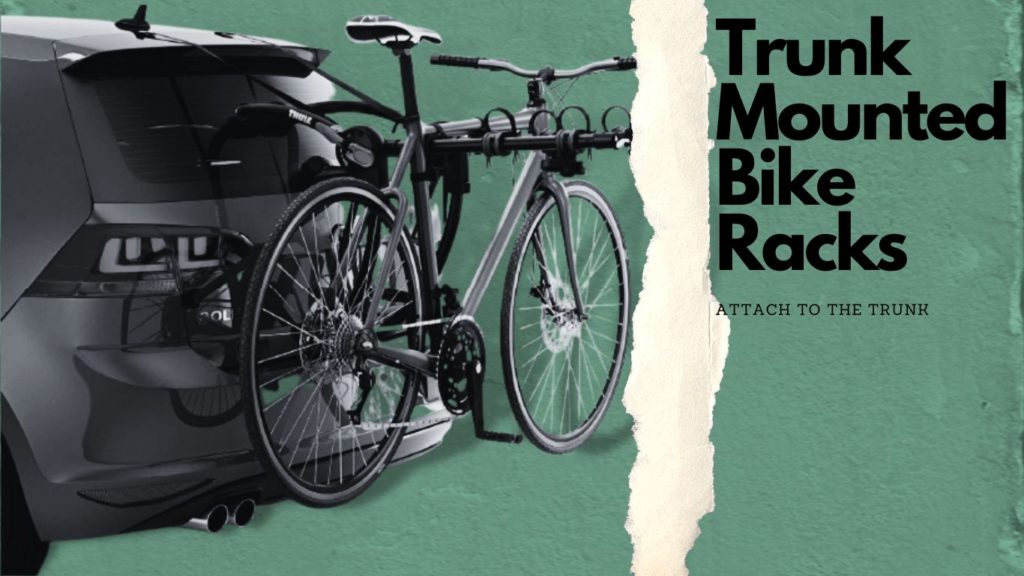
If your car has a trunk, you can attach a trunk-mounted bicycle rack to the motor and transit your bikes on the roads. Trunk-mounted bike racks are the cheapest options compared to other types of bike racks. They often independently attach to the car trunk with straps and hooks, and they can carry up to 4 bikes. We don’t recommend carrying too many bikes by using trunk-mounted bike racks because they are not as trustable as hitch-mounted bike racks.
What to pay attention to when using trunk-mounted bike racks?
Benefits and Disadvantages of Trunk-mounted bike racks
Trunk-mounted bike racks have some potential drawbacks. If your car does not have a rear spoiler, the rack can cause the rear of the car to be more aerodynamically unstable. This can potentially lead to reduced fuel efficiency and increased wind noise. Additionally, if you have to remove the rack in order to access the trunk, it can be a bit of a hassle. Finally, trunk-mounted bike racks can sometimes block the view out of the rear window, which can be a safety concern.
One of the biggest drawbacks is that they can damage your car. If you’re not careful, you can scratch or dent your car when you’re loading or unloading your bikes. Also, if you live in an area with a lot of wind, your bicycle rack can make your car more aerodynamic and increase fuel consumption (more money). Another drawback of bicycle racks is that they can be stolen. If you leave your bike rack unattended, it’s easy for someone to take it. And if your bike is attached to the rack, they can take your bike too. This is why it’s important to always lock your bicycle when you’re not using it. Despite these drawbacks, bike racks are still a convenient way to transport your bikes.

Spare Tire Mounted Bike Racks
Can you see a spare tire frame at the back of your car? If you can, you can use a spare tire bike rack to transport bikes; otherwise, you cannot use one for that purpose because these racks attach to spare tire frames.
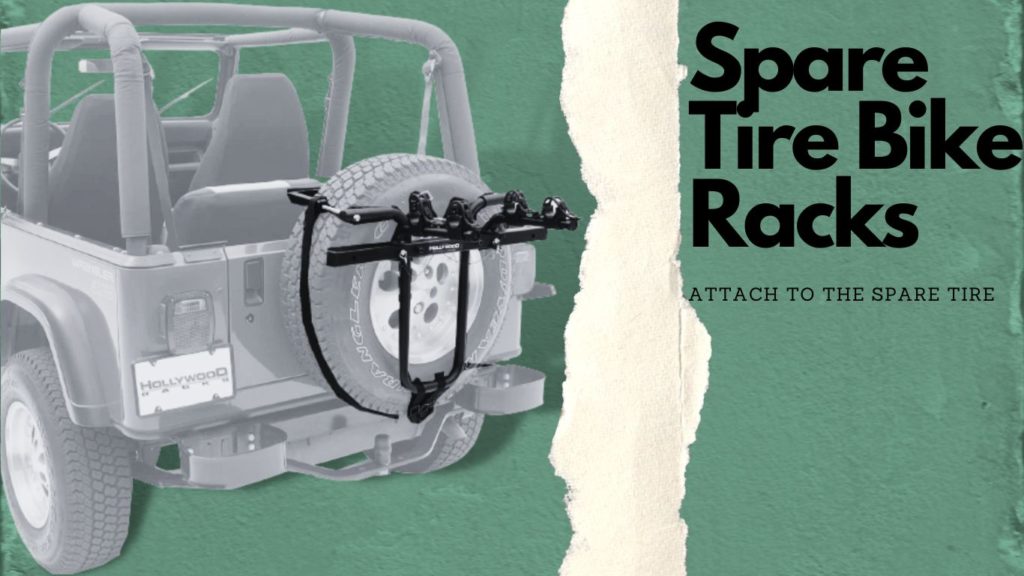
Although we have many different bike racks on the market, spare tire bike racks are perfect for cars with rear spare tire frames. Most SUVs and Vans can use one for sure.
There are a few potential drawbacks to using a spare tire bike rack. One is that they can be difficult to install, especially if you don’t have experience with it. Another is that they can be less stable than other types of bicycle racks, so if you’re carrying more than one bike, it’s important to make sure that the rack is securely fastened to the car. Additionally, spare tire bike racks usually only accommodate two bikes, so if you’re looking to carry more than that, you’ll need to look into a different type of rack.
Installing a spare tire bicycle rack is a simple and effective way to carry your bikes on the back of your car. Here’s a quick rundown of what you’ll need to do to get your bicycle rack installed and ready to go. First, you’ll need to remove the spare tire from the back of your car. This is usually a simple process that just requires you to remove a few bolts. Once the spare tire is removed, you’ll need to attach the bike rack to the spare tire mount. Again, this is usually a simple process that just requires a few bolts to be tightened. Once the rack is installed, you’ll need to attach your bikes to the rack. This is usually done by lifting the bicycles onto the rack and then securing them in place with straps. Make sure that the bikes are secure before you hit the road.

In Conclusion
In this article, you can find some solutions for transporting bikes without a trailer hitch. We have a list of 12 bike racks for your consideration. If you already got one at home, you may need to offer regular maintenance and cleaning on bike racks to increase their durability.
Our team is creating outdoor-gear relevant articles with passion. If our articles can help you to find the correct solutions for your questions, we will be happy about that. In the content creation process, we usually collect accurate and useful information online or offline to compile our content in an organized way. Consequently, we can guarantee that you can discover some expected answers to your questions. We appreciate your time on our site.

